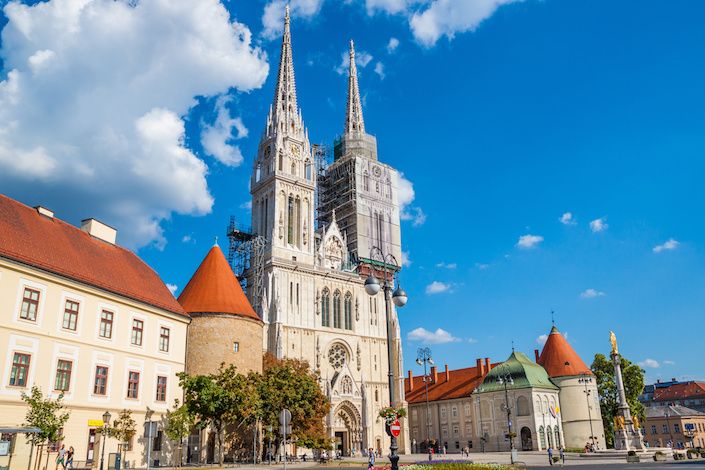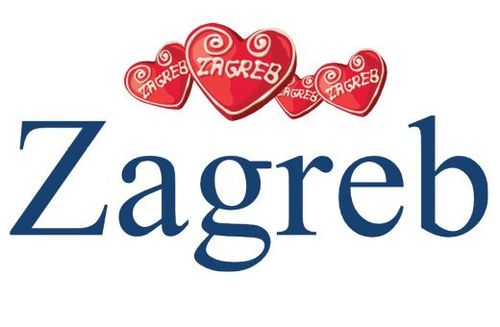Where travel agents earn, learn and save!
News / Top attractions in Croatia’s capital Zagreb make this city a must-see
Here’s a list of the city’s top attractions

Zagreb, capital of Croatia, is a word-of-mouth destination that’s just as big of a draw for return travellers as it is for first-time visitors.
For anyone new to Zagreb – or for that matter, repeat guests who want to ‘tick all the boxes’ on this beautiful European hot spot – here’s a list of the city’s top attractions…
1. St. Mark’s Square – The standout here is pristine St. Mark’s Church, which in part dates from the mid-13th century. St. Mark’s Square is also the site of the graceful and stately buildings housing the Croatian government, Parliament and Constitutional Court.
2. Lenuci Horseshoe – A green oasis in the heart of the city, and the pinnacle of urban planning for Zagreb, this 19th-century patchwork of squares and parks is where visitors will find numerous scientific and cultural institutions.
3. Dolac – Busy and bustling Dolac is Zagreb’s biggest and most charming farmers’ market. A long-time favourite for locals, Dolac is also an ideal spot for visitors to check out quality produce from all around Croatia. The colourful displays make for great photo ops.
4. Mirogoj – More than a burial ground, this cemetery is also a serene green-space and an open-air sculpture park.
5. Funicular – It’s easy to get from ‘Gornji grad’ (Upper Town) to ‘Donji grad’ (Lower Town) – or vice versa – on Zagreb’s funicular. Famous as the world’s shortest cable railway used for public transport, the funicular has been connecting the Upper and Lower Towns since 1890.
6. Maksimir – Locals might tell you that they consider Maksimir to be the most beautiful of Zagreb’s parks. And many visitors would no doubt agree. Opened in 1794, Maksimir is also the oldest of the city’s parks and features several lakes, pavilions, and the accompanying Zagreb Zoo.
7. The Cathedral – The stunning sacral building, the largest in Croatia, has been rebuilt many times since its inception in the 13th century. Its now-iconic Neo-Gothic look came about in the 19th century.
8. Špica – The pedestrianized stretch between Ban Jelačić Square and Petar Preradović Square (also known as Flower Square) is where Zagreb comes to see and be seen. Špica’s inviting café terraces and the surrounding scene epitomize Zagreb’s coffee-drinking culture.
9. Lotrščak Tower – Every day at noon, the Grič cannon at Lotrščak Tower is fired with thunderous ceremony. Lotrščak Tower is also one of the best-preserved parts of Zagreb’s fortifications.
10. Medvednica – Commune with nature in this peaceful (and beautiful) nature park, at the foot of Mount Medvednica in the northernmost region of Zagreb. There is a new Sljeme Cable Car and visitor centre at Medvedgrad fortress.

A September Highlight: ARTUPUNKTURA
And here’s a timely special mention especially for fans of art and culture: ARTUPUNKTURA, the second edition of Zagreb’s Signature Art Festival, is taking over Zagreb tomorrow, Sept. 15, with art exhibitions and cultural performances across the city.
The idea of Artupunktura is to bring together people through art and culture and awaken the city’s vital energy through joint artistic activities at various city locations, says Martina Bienenfeld, CEO of the Zagreb Tourist Board.
“Artupunktura is a unique project of Zagreb Tourist Board and partners, whose numerous participants joined with their ideas and programs,” says Bienenfeld. “By connecting culture and tourism, Artupunktura emphasizes the area of contemporary culture, thus, positioning the city of Zagreb as a creative center and destination of the urban European cultural scene. The program of the second edition of Artupunktura consists of 23 private and public participants, which is more than twice as many as last year’s premier edition.”
Through exposition, intervention, discourse, or socialization, Zagreb’s art collectives and organizations, artists, partners, and visitors are positioning the fall season as a time for awakening awareness of the value of creation and simultaneously offering soul therapy with Zagreb’s art, she added.
The Academy of Fine Arts, the Croatian Society of Fine Artists, Lauba, and the Museum of Arts and Crafts, to name a few, have joined the initiative. “Affirming art in society, affirming Zagreb as a city of art and culture, we thank all of our partners for recognizing our initiative, which strengthens Zagreb’s year-round offer,” says Bienenfeld.
More information about Artupunktura can be found at artupunktura.hr. And for more information about visiting Zagreb see infozagreb.hr.
Source: Travelweek











